Africa
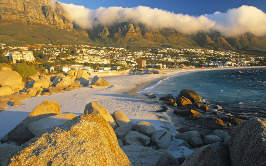
Africa has 55 sovereign countries—the most on any continent—and is the second largest continent in terms of both land area and population. Africa is bounded by the Mediterranean Sea to the north, by the Atlantic Ocean to the west, by the Red Sea to the northeast, and by the Indian Ocean to the southeast. Africa is a vast continent spanning over 5,000 miles north-south and 4,800 miles east-west (not including islands) and contains a wide array of peoples, skin colors, religions, and cultures. Africa contains the world's longest river—the 6,650km-long Nile River running from Burundi to Egypt—while the Congo River in the DRC is the second largest in terms of discharge as well as the deepest with a depth of over 230m (750ft) in some spots. Tanzania's Mount Kilimanjaro is the world's tallest free-standing mountain at 5,890m (19,340ft). Djibouti's Lake Assal is the second lowest point on Earth, the saltiest lake outside Antarctica, and one of the hottest places on Earth. While the first activity most people associate with Africa is safaris, there are endless possibilities for adventure. You can purchase crafts in markets, venture into the Sahara with a Tuareg caravan, visit pygmy villages, hike through jungle to watch gorillas, relax on tropical islands in the Indian Ocean, snack on monkey or python "bushmeat", travel down a river in a dugout "pirogue", travel across savanna on a colonial-era railway, and much more.
Africa is a very diverse continent, with each country, or even each part of a country having its own unique culture. While it is common for people in the West to refer to Africa as if it was a single country, one should remember the sheer size of the continent, and that Africa is not one country but 55 different countries, meaning that it is impossible to make generalisations of Africa as a whole.
Tragically misunderstood by many people as a land of poverty, corruption, war and famine, and simply as a land of suffering—a misconception only bolstered by the media and the numerous NGOs on the continent—Africa today is a vast continent with many bustling metropolises, friendly people, and amazingly diverse and beautiful landscapes. While there are plenty of places resembling the stereotypical Africa of war, famine, and poverty, much of the continent is peaceful, well-fed, and of working class.
Botswana
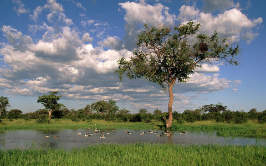
Botswana is a land-locked country located in Southern Africa and bordering on Namibia, South Africa, Zimbabwe and Zambia. Formerly the British protectorate of Bechuanaland, Botswana adopted its new name upon independence in 1966. The economy, one of the most robust on the continent, is dominated by diamond mining and tourism. Botswana is famous for its wildlife, areas like the Chobe National Park, Moremi National Park in the Okavango Delta and the Central Kalahari Game Reserve have a very high concentration of game. The bulk of the Kalahari desert falls within Botswana's borders and Botswana is home to most of the world's San (bushman) population.
Places of Interest: Okavango Delta, Moremi Game Reserve, Chobe National Park, Makgadikgadi National Park
Ethiopia
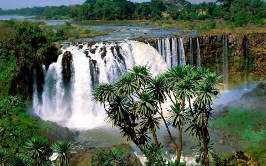
Ethiopia is a country situated in the Horn of Africa. It is the 2nd-most populous nation in Africa (after Nigeria), bordered by Eritrea to the north, Djibouti to the northeast, Somalia to the east, Kenya to the south, and Sudan and South Sudan to the west. Ethiopia is the oldest independent country in Africa and the second-oldest official Christian nation in the world after Armenia. Ethiopia is also the place for the first Hijra (615 AD) in Islamic history where the Christan king of Ethiopia accepted Muslim refugees from Mecca sent by the prophet Mohamed.
- Historic Routes, churches and Mosques: Lalibella,Axum, Gonder, Harar
- Tribal region safari: Lower Omo Valley
- Volcanic lake: Danakil depression and Ereta ale
- Rift valley lakes: Wonchi crater lake, Lanano,abay chamo
- Towns: Bahir Dar, Hawassa
Kenya
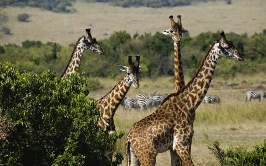
Kenya has some of the world's best game reserves where you can see some of the finest African flora and fauna. The parks are famous for lions, giraffes, elephants and huge herds of zebras, wildebeests and buffalos. It's wise to shop around for tour operators before picking one, to see what's currently on offer, who you vibe with, and to get a competitive price.
The annual wildebeest migration (from Maasai Mara to the Serengeti) is an awesome sight and best experienced in a balloon safari. Bookings to watch the migration are best done months in advance due to the high demand and limited lodging available in the Mara. Migration is during August and September.
Kenya also is a great destination for beach holidays, with several located along the coastal regions and the city of Mombasa.
The Northern parts of Kenya are home to some spectacular tribes living very traditional lifestyles - you can start to encounter these remarkable socieities near to and around the main road North into Ethiopia (the A2 which runs through Marsabit and into Moyale at the Ethopian border), as well as West of this in places such as Wamba, Maralal, Baragoi, Korr, Kargi, South Horr, etc.
Madagascar
Madagascar is a country that occupies a large island of the same name, located in the Indian Ocean off the eastern coast of Africa. It is the fourth largest island in the world.
Tsingy de Bemaraha is a UNESCO World Heritage Site and is Madagascar‘s largest reserve (152,000 hectares). The fascinating raised limestone plateau is decorated with a frail, chaotic razor-sharp collection of pinnacles, the “Tsingy”. Areas of deciduous forest also provide the chance to see brown lemurs and a variety of bird life, we may also meet the rare all white Decken’s sifaka. The great variety of flora includes: aloes, orchids, numerous pachypodium and baobabs. The deciduous forest is home to over 50 species of birds; 7 species of lemurs (including the all-white Deckens sifaka) and the rare stump-tailed chameleon (Brookesia perarmata). The site of Bemaraha is managed under special UNESCO and access is restricted and the areas you are allowed to visit vary from time to time. Located approximately 180 km north of Morondava.
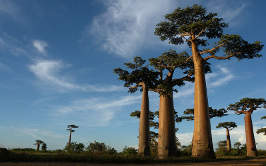
Avenue of the Baobabs is an extra-ordinary stand of huge baobab trees. Located 45 minutes north of Morondava on Madagascar's west coast it is one of the most visited sites in the Menabe Region. A candidate as one of the 7 Wonders of Africa; efforts are underway to protect this unique grove of more than a dozen trees. Some of the trees, Adansonia grandidieri, are over 800 years old and reach a height of 30+ meters. Truly a photographers paradise and especially beautiful at sunset.
Malawi
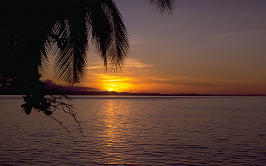
Malawi has a massive diversity of beautiful landscapes. The highest peaks in Malawi touch 10,000ft (3,000m) while the lowest point is barely above sea level. This range of altitudes in a small area help to make the landscape of Malawi one of the most varied in all Africa. It is generally a green, lush country, with plateaux, highlands, forests, mountains, plains, escarpments and dramatic river valleys. The Rift Valley is the dominant feature, providing the vast chasm that Lake Malawi fills, and extending to te south of the country following the Shire River that drains the Lake. The flatter areas of the Rift Valley in South Malawi are home to some important wetlands, including Elephant Marsh, down in the Lower Shire Valley. To the west of the Lake and either side of the Shire Valley in the south is the Central African Plateau. The transition from Rift Valley floor up to the Central African Plateau is characterised by a series of dramatic escarpments, such as at Nkhotakota Wildlife Reserve, a protected area of rugged, unspoilt wilderness. The Central African Plateau itself is gently undulating land between 1,600ft (490m) and 5,000ft (1,500m), with the occassional lake (such as Lake Chilwa) and punctuated by more dramatic hills and forests.
It is the widespread highlands and forests that provide the most impressive of the Malawi's varied scenery. Up where the air is fresh and cool are clear mountain streams, heaths, rolling montane grassland and evergreen forests.
The southern part of Malawi has the best known highlands - Mulanje Massif and Zomba Plateau. The former is a massive wilderness plateau of syenite granite rising from the Phalombe Plains. It has a number of peaks, including the highest in both the country and the whole of central Africa: Sapitwa, at 3,000 metres (10,000 feet). The tea estates that stretch west of Mulanje as far as Thyolo, are also wonderfully scenic. Zomba Plateau is not as high as Mulanje, but none the less impressive. It is slab-like with a gently undulating plateau top which is accessible by road.
Mozambique
Mozambique is a country on the Indian Ocean coast of Southern Africa. It is bordered by South Africa to the south, Tanzania to the north and has inland borders with Malawi, Zambia, Zimbabwe and Swaziland. Mozambique's eastern coastline along the Indian Ocean is more than 1,000 km long, a fantastic draw for scuba divers, fishermen, sailors and beach lovers.
Namibia
Namibia is a land of much natural beauty. To truly appreciate the country, you need to get out in the countryside, either on a tour or by renting a car, and take in the deserts, the mountains, the villages and all that that Namibia has to offer.
One of its most dominant features, and the one for which the country is named, is the Namib Desert that stretches for nearly a 1000 km along the Atlantic coast. As one of the oldest deserts in the world, its sand takes on a distinctive rust colour and it has some of the highest sand dunes in the world. Sossusvlei is the most accessible part of the desert and is a magical place with its towering dunes that shift hues as the sun rises and sets. Further south, near the South African border, is Fish River Canyon, one of the largest canyons in the world. Stretching for 160 km, it is reaches 27 km across at its widest and nearly 550 m down at its deepest. In the north of the country is the empty and mostly inaccessible Skeleton Coast National Park. It's a seemingly barren expanse of stone and sand famous for its fog and the number of shipwrecks along the coast.
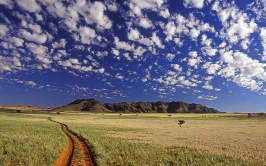
Perhaps not as plentiful as neighbouring Botswana or South Africa, Namibia still has plenty of African wildlife to see. This includes some local subspecies, such as desert lions, desert elephants and the Hartmann's Mountain Zebra, which are adapted to the harsh desert climate. Grazing animals like gemsbok, ostrich and springbok are also common. Namibia's national parks are an excellent place to start and one of the most famous is Etosha National Park in Northern Namibia. The park surrounds the Etosha salt pan, which attracts animals, particularly in the drier winter months, because it is a source of water in a very dry land. Other notable spots to view wildlife are Waterberg Plateau Park, the parks of the Caprivi and the remote Kaokoland.
Namibia has a German influence from colonial times that is still reflected in some of its buildings. Windhoek has a number of interesting buildings like the Christuskirche, the train station and the castle-like Heinitzburg Hotel. Lüderitz is a colonial-era town with distinctive German Imperial and Art Nouveau styles. Nearby is the abandoned mining town of Kolmanskop. Once a thriving center for diamonds, the miners moved on and the sand dunes have moved in, but tours are still available.
Rwanda
Rwanda is a relatively stable East African country, and easily accessible from Kenya and Uganda. It is relatively easy, safe and simple to travel around. It is landlocked, surrounded by Uganda to the north, Tanzania to the east, Burundi to the south, and the Democratic Republic of the Congo to the west.
Rwanda is not only the land of a thousand hills, but also a country rich in flora and fauna and stunning natural beauty in its scenic rolling and breathtaking green savannah. The country hosts some rare species of animals like the silverback mountain Gorillas as well as unique birds and insects in the tropical forest of Nyungwe.
South Africa
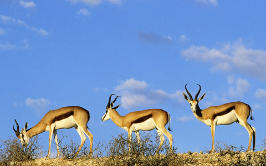
South Africa is located at the southern tip of Africa. It is bordered by Namibia, Botswana, Zimbabwe, Mozambique, Swaziland and Lesotho (which is completely surrounded by South Africa). It is a vast country with widely varying landscapes and has 11 official languages, as well as an equally diverse population. South Africa is renowned for its wines and is one of the world's largest producers of gold. South Africa has a strong economy and is an influential player in African politics. In 2010, South Africa hosted the first Football World Cup to be held on the African continent.
Wild animals in their natural habitat
- Kruger National Park in Mpumalanga
- The annual Sardine run off the Wild coast and KZN south coast
- Great White Sharks of False Bay and Gansbaai
- Addo Elephant National Park in the Eastern Cape
- Kgalagadi Transfrontier Park between South Africa and Botswana
- iSimangaliso Wetland Park (World heritage site) and Sodwana Bay in northern KwaZulu-Natal
- The Whale Route in Hermanus
Areas of natural beauty and botanical interest
- Table mountain and Cape Point in the Table Mountain National Park in Cape Town
- The Garden Route in the Western Cape province
- Tsitsikamma in the Eastern Cape
- Augrabies Falls in the Northern Cape
- Ai-Ais/Richtersveld Transfrontier Park between South Africa and Namibia
- Ukhahlamba Drakensberg Park (World heritage site) in KwaZulu-Natal
- Blyde River Canyon in Mpumalanga
Tanzania
Tanzania is a country with great national parks, where you can see some of the finest African flora and fauna. Tanzania is home to several national parks and game reserves. Safaris in Tanzania can be put into two categories, the Northern Circuit (Serengeti, Ngorongoro, Manyara and Tarangire) and the Southern Circuit (Selous, Mikumi and Ruaha). This is certainly an oversimplification and does not include other interesting but harder to reach parks such as Katavi and Gombe, just to name two. For tourist, the two first groupings are more accessible as several tour companies offer a variety a packages for these.
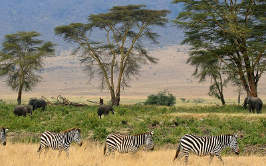
Serengeti National Park, made famous by numerous Discovery Channel specials, hosts a wide range of wildlife, including lions, cheetahs, leopards, hippopotamuses, elephants, zebra, buffalo, water buck, crocodiles, gazelle, warthogs, and wildebeest. One major attraction is the wildebeest migration, which occurs continuously between the Serengeti and Masai Mara (Kenya).
Mount Kilimanjaro is the highest peak in Africa and one of the highest freestanding mountains in the world. Many people travel to Tanzania just to climb this mountain.
Uganda
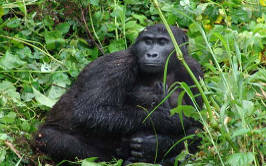
Uganda is a country in East Africa. It is bordered to the east by Kenya, to the north by South Sudan, to the west by the Democratic Republic of the Congo, to the southwest by Rwanda, and to the south by Tanzania. Famously called the Pearl of Africa by Winston Churchill, it is home to one of the most diverse and concentrated ranges of African fauna including the highly endangered mountain gorilla and the endangered common chimpanzee.
Uganda has a variety of landscapes which most tourists find interesting. The North is relatively flat and dry savanna while the East is mountainous and lush and the centre of Uganda hosts larges forests.
